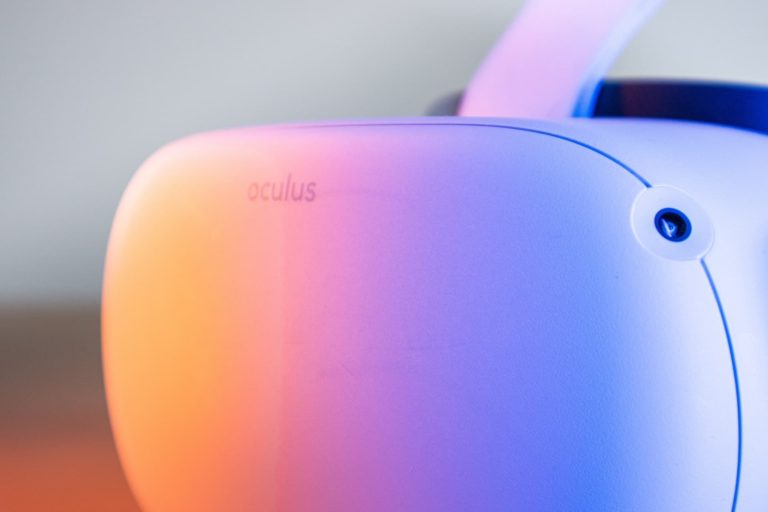
As we roll into 2023, it’s time for our annual ritual of synthesizing the lessons from the past twelve months and formulating the outlook for the next twelve. 2022 was an incremental year for AR & VR, which both continue to gradually push forward in gaining mainstream traction.
Highlights include mobile AR engagement & monetization, continued R&D in AR glasses, and the gradual march of VR. Amidst all this, the last year was also defined by the continued rise of metaverse mania. The hype machine is still in high gear, generating lots of vapor.
So where is spatial computing, and where is it headed? Our research arm ARtillery Intelligence’s recent report Spatial Computing: 2022 Lessons, 2023 Outlook tackles these questions. After recently publishing 2023 predictions here on AR Insider, we shift gears to 2022 lessons.
To that end, what were the biggest takeaways in 2022 in the wide world of spatial computing? There were many, but we’ll zero in today on the state of VR. Though it’s not the revolutionary force it was once anticipated to be, it’s growing gradually and achieving small wins.
Magic Number
After examining AR’s market dynamics last week, what about its spatial cousin, VR? It’s a promising technology in entertainment, gaming, and some enterprise functions. But it’s not the revolution in computing that was touted a few years ago. Traction continues to be challenged.
We estimate that VR revenue will grow from $8.1 billion in 2021 to $27.8 billion in 2026. It includes consumer ($7.3 billion in 2022) and enterprise spending ($4.37 billion in 2022). Consumer spending is driven by gaming’s lead (and social media’s potential) as a VR use case.
VR conversely has valuable but relatively-narrow use in enterprise settings due to its degree of sensory immersion that compromises factors like safety, social presence, and ergonomics. There are exceptions however, such as VR’s adoption and efficacy as an immersive training tool.
In any case, VR’s biggest accelerant is Meta. Though its flagship Quest 2 saw a price increase in 2022, it remains competitive at sub-$500 levels. This is a central piece in Meta’s longer-term play to reach network effect in VR by gaining early market share through loss-leader pricing.
As the company has stated in the past, its goal has been to reach 10 million in-market VR units. This is the magic number where there’s critical mass to attract content developers en masse. The thought is that an eight-figure installed base presents financial incentive for developers.
In other words, as financially-motivated developers flock to a given platform like osmosis, it results in greater content libraries that attract more users, which in turn attract more developers. It’s a classic flywheel effect. According to leaks last week, Meta has sold 20 million Quests (1 & 2).
Bridge to AR
Beyond Quest 1 and 2, Meta recently diversified its hardware line with the Quest Pro. Cousin to the flagship Quest 2, it pushes VR limits and is a bridge toward Meta’s AR ambitions. It accomplishes this through color passthrough cameras that display the world around the user.
This approach embodies Meta’s spatial computing ambitions, which span VR and AR. Most of its focus has been on the former but it’s increasingly tackling the latter. For example, it’s building AR glasses with Essilor Luxottica, and half of its XR R&D spend is focused on AR.
Quest Pro represents another track: passthrough AR. Sometimes referred to as mixed reality, this starts to seed demand and get developers thinking natively for AR experiences, albeit experienced through a VR headset. Meta will attack the spatial spectrum from many angles.
But though Meta’s many moves and massive investments accelerate and define the VR market, it’s not alone. There are other players that continue to innovate and shape the VR competitive landscape. For example, we have Valve Index in PC VR and PSVR 2 in console VR.
And in the standalone category, competing with Quest 2, is Pico – including the recently-launched Pico 4. This could challenge Quest 2 with a competitive spec sheet and price tag. Pico could also share Meta’s ability to lower hardware costs given its deep-pocketed owner, ByteDance.
In fact, ByteDance is a social media giant using ad revenue to invest in VR. If this sounds familiar, it’s because it’s Meta’s VR playbook. This means that a Meta vs. Pico rivalry will be one to watch as Pico 4 penetrates, especially in China, where Meta doesn’t have the access that Pico does.
Exit Potential
Despite some of these Pico advantages, competing with a giant of Meta’s stature won’t be easy, For example, Meta has three notable advantages. The first is its organizational priority and billions in quarterly spending on VR. Its top-down commitment to VR will be hard to match.
The second advantage is the technical competency it’s developed in VR. Meta Reality Labs has become a thought-leading institution in VR. And the third is its head start in the content ecosystem. Indeed, one of the things that makes or breaks a given VR headset is content.
In that sense, Meta continues to invest in content by attracting developers through a larger headset base – part of the reason for the loss-leader pricing examined earlier. It knows that content libraries will naturally expand if it creates enough incentive for developers to show up.
Augmenting that approach, Meta continues to directly invest in content by acquiring VR game studios like Within. That not only drives content creation through cash infusions but incentivizes content creators to enter the market (and venture funding to fuel them) through exit potential.
We’ll pause there and circle back in the next report excerpt with another XR segment snapshot. Meanwhile, see the full report here.






